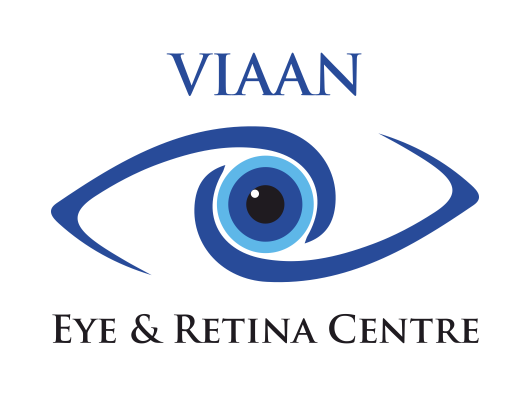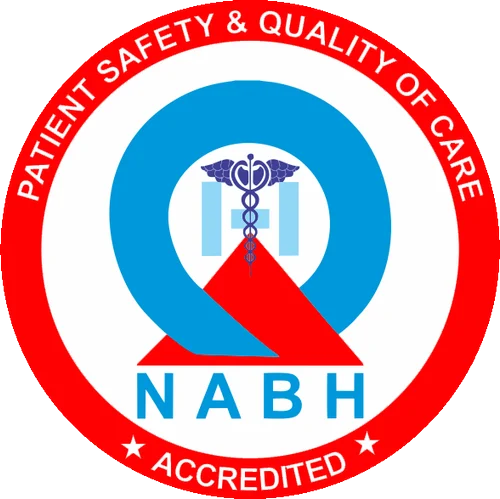PAEDIATRIC OPHTHALMOLOGY
- Paediatric Cataracts
- Amblyopia & Refractive Errors
- Paediatric Squint
- Paediatric Glaucoma
- Paediatric Lacrimal system disorders
- Paediatric Retina (ROP)
Congenital Cataracts are responsible for 5% to 20% of blindness in children worldwide. Cataract can be unilateral or bilateral and can vary in size from a small white dot to total opacification of the lens.
Infantile cataracts may occur due to systematic conditions diabetes, galactosemia, wilsons disease and hypocalcenma. They may occur as a part of number of syndromes like trisomy 21, intrautenhe infections like rubella, toxoplasinosis, herpes samplex, vanicella and sypentis. Unilateral cataracts are generally associated with ocular dysgenesis such as persistent fetalvascenlative (PFV), posterior lenticomus etc. Trauma is another known cause of paediatric cataracts.
Regardless of etiology, prompt treatment of visually significant cataract is essential for proper development of vision.
Since the child is unable to articulate the symptoms, diagnosis is often delayed. Squint, lack of reaction to light, head tilt, failure to recongnize and dense cataract may lead to development of sensory mystagmus
Management of paediatric cataract is vastly different from adults as the younger anatomy of ocular tissues, continuous growth of surroundings structure pose challenges to the surgeon.
Not all paediatric cataracts require surgery. However close follow up is essential to prevent development of amblyopia and other associated complications. Pharmacological dilation, part time occlusion etc can be tried till the eye growth has stabilized and an IOL can be implanted with less refractive uncertaimity.
However if the cataract is dense and unilateral surgery is advised as early as possible, between 4-6 years of age. Bilateral dense cataracts should be operated by 6-8 weeks of age generally one week apart.
Children are special and require more attention and care than adults while performing ophthalmic examination. We at Viaan pride ourselves on providing the best possible care for children’s eye conditions with the latest equipment and technology under guidance of our experienced team of doctors and staff.
Every child should have his first eye examination at 6 months of age and then another at 3 years of age and one right before they enrol for school. Once the child starts school an eye checkup is recommended every 2 years. If there are no significant visual issues. Since children can’t express their selves as clearly. They are more vunerable to visual problem like refractive and amblyopia going unnoticed. A family history of any ophthalmological condition makes it even more essential for more regular and frequent screenings.
WHAT IS AMBLYOPIA?
Amblyopia is poor vision in an eye that did not develop normal sight during early childhood. It is sometimes called “lazy eye.” It commonly affects one eye but may also involve both eyes. It is caused by lack of use of one eye, when brain ‘favours’ one eye over the other.
WHAT CAUSES AMBLYOPIA?
Newborn infants do not have fully developed visual system at time of birth. During first 9 years of childhood years, their visual system changes quickly and their sight continues to develop. Any insult to the child’s vision during this time period can lead to amblyopia.
CAUSES OF AMBLYOPIA:
-
- Squint (Crossed eyes)When child has squint, the brain ignores the image from the deviating eye to avoid double vision. This causes poor visual development of the deviating eye leading to amblyopia.
-
- Unequal Refractive error ( Anisometropia)- In this condition, the two eyes have different refractive errors. When this is the case, the brain will use the better-seeing eye and essentially “turn off” vision from the weaker eye and thus eye with greater refractive error gets amblyopic. An early treatment by giving the right glasses can correct this problem by allowing both eyes to work equally together.
- Sensory (Stimulus) deprivation- Any form of stimulus deprivation to either one or both eyes in early childhood may lead to amblyopia. This could be because of ptosis (Drooping of upper lid) or cataract
LAZY EYE SYMPTOMS
It is not easy to recognize amblyopia (lazy eye) in children. A child may not be aware of having one stronger eye and one weaker eye . If child has a misaligned or squinting eye then parents may bring the child for eye checkup. The vision of the child can be tested by the ophthalmologist by special tests.
TREATMENT FOR AMBLYOPIA
Early diagnosis increases the chance for a complete recovery.Lazy eye correction or treatment should begin as soon as possible so that the child’s visual system can develop properly . The aim is to stimulate the brain to use the suppressed eye before permanent change has occurred, so that it gets a chance of normal development. The earlier the amblyopia is detected and the treatment started, the better are the results. If an amblyopia that is not treated by 10 years of age , then chances of recovering the vision are poor.
Corrective lenses, prisms and/or contact lenses are often used to treat amblyopia.
The treatment involves ‘forcing’ the brain to use the weaker eye and thus stimulating its visual development. This is done by patching the better eye. The schedule of patching is decided by the ophthalmologist depending upon the degree of amblyopia and the age of child. If your ophthalmologist finds a cataract or other problem in the eye that is causing the visual problem, surgery may be required to correct the problem that is causing amblyopia.
AMBLYOPIA A BIG HANDICAP
Amblyopia is a handicap because it can limit the occupational and leisure activities you can do. Activities requiring good depth perception may be difficult or impossible to perform.
Under normal physiological conditions, the image of an object falls simultaneously on the fovea of each. This is possible if the eyes are properly aligned. This straight position of the eyes is called orthophoria. Any misalignment of the either eye is called strabismus or eye deviation in other words. There are 2 benefits of treating strabismus. The initial one is functional gain including the improvement of visual acuity and stereopsis. The second one is the cosmetic improvement. Tropia defines manifest deviation of eyes and phoria implies latent deviation. Phoria is detected by the simple cover-uncover test. The test is performed while the patient fixates a distant object. The physician covers one eye for 2-3 seconds and then the other eye. If orthophoria is present, no movement is detected. If latent deviation exists movement of eyes towards the opposite of the deviation is observed. Paralytic strabismus in children may be in form of third, fourth or sixth cranial nerve palsy.
www.intechopen.com 16 Complementary Pediatrics The most common one is the sixth cranial nerve palsy (abducens palsy), which is characterized by loss of abduction. Cranial imaging must be ordered in all forms of acquired paralytic strabismus to exclude cranial masses
Pseudo-strabismus is the illusion of deviation in a child with orthophoria. It is most commonly in the form of pseudo-esotropia. The most common reason for this false appearance of inward deviation is broad nasal bridge with prominent epicanthal folds. This appearance usually resolves spontaneously and requires no treatment
Management Associated amblyopia and refractive errors must be addressed initially in all cases of strabismus. Abnormal eye movements are frequently associated with pediatric eye deviations and they can influence the management of the cases. Accommodative types of esotropias may be completely cured with spectacles. Surgical correction is decided according to the angle of deviation, if the deviation is not corrected by the spectacles during follow-up. All types of strabismus must be referred to an ophthalmologist, since early treatment by spectacles or surgery is important for normal binocular visual development.
Primary congenital glaucoma is the most common cause for raised intra ocular pressure in children. It occurs in 1:10000 births and is more commonly seen in boys. This is due to anomalous development of the anterior chamber angle.
Raised IOP, cloudy cornea, large appearance of eyes (buphthalmos) and optic nerve alterations are key features of paediatric glaucoma.
Treatment is surgical in all cases of PCG.
Ocular pathologies in children lacrmal systems disorders alert parents immediately because of obvious watering with occasional mucoid discharge. Congenital Nasolacrimal dust obstruction is the main etiology of epiphora (watering) in the paediatric age group.
Congenital NLD
The Nasolacrimal duct is a continuation of the lacrimal sac and opens in the nasal meatus .Due to incomplete development of valve present at the lower end the duct there might be symptoms of epiphora. In more than 90% of cases this resolves spontaneously by 6 months of age however a few children might require intervention.
The treatment approved is mainly conservative including antibiotic drops and Sac massage. Probing of the NLD is done if symptoms persist beyond 1 year. If Epiphora persists after 2probings, then surgical intervention (DCR) should be considered.
Why should I worry about the eyes of a premature baby?
While from outside the eye looks ‘normal’, the inside of the eye, the retina, is not fully developed in premature babies. Abnormal blood vessels can develop in such a retina. These abnormal blood vessels can cause internal bleeding and even retinal detachment. This is called Retinopathy of Prematurity (ROP). This condition results in low vision or blindness – both of which are irreversible.
Unfortunately, eyes who start to develop ROP have no changes seen on the outside and baby cannot complain that they are losing their vision silently. Hence it is very critical and mandatory to get retinal screening for ROP in premature born babies.
How can we detect ROP?
A trained ophthalmologist can detect ROP by dilating the pupils of the eye using eye drops. An indirect ophthalmoscope is used to scan the entire retina to detect ROP and gauge the state of retinal maturity. A fundus imaging camera can also be used for the same.
Do all babies need a retinal examination for ROP?
As per Govt. of India RBSK guidelines, babies with a birth weight of less than 2000 grams or those born in under 34 weeks of pregnancy are most likely to have ROP. (remember 2-34 rule)
Pre-term babies who have birth weight more than 2000 grams or born after 34 weeks but had problems after birth such as breathing problem, lack of Oxygen, infections, blood transfusions etc., are also vulnerable and need retinal examination.
Is it too late for my baby’s eyes?
Follow the “Day-30” strategy. The FIRST retinal examination should be completed before “day-30” of the life of a premature baby. It should preferably be done earlier (at 2-3 weeks of birth) in very low weight babies (<1200 grams birth weight).Remember ‘Tees Din Roshnike- Thirty Days to Vision!
What is the treatment for ROP?
ROP is treated with Laser rays, injections to the eye, surgery and sometimes a freezing treatment (Cryopexy). The treatment helps stop further growth of abnormal vessels or prevents progression of retinal detachment, thus preventing vision loss.
How often should the retina be examined?
ROP can progress in 7-14 days and therefore needs a close follow-up till the retina matures. More than one examination may be needed in babies before they are declared out of danger. Do not miss ROP follow-up appointments as each visit is critical.
When should we treat ROP?
ROP needs to be treated within 72 hours or earlier, as soon as it reaches a critical stage called High risk pre- Threshold ROPor there is aggressive ROP (AROP). There is greatest risk of vision loss if left untreated after this. Time is crucial!
After treatment
IIf treated in time, the child is expected to have reasonably good vision. All premature babies need further regular eye examinations till they start going to school.
They may need glasses or treatment for lazy eyes/ cross-eyes and sometimes, for cataract, glaucoma and retinal detachment.


